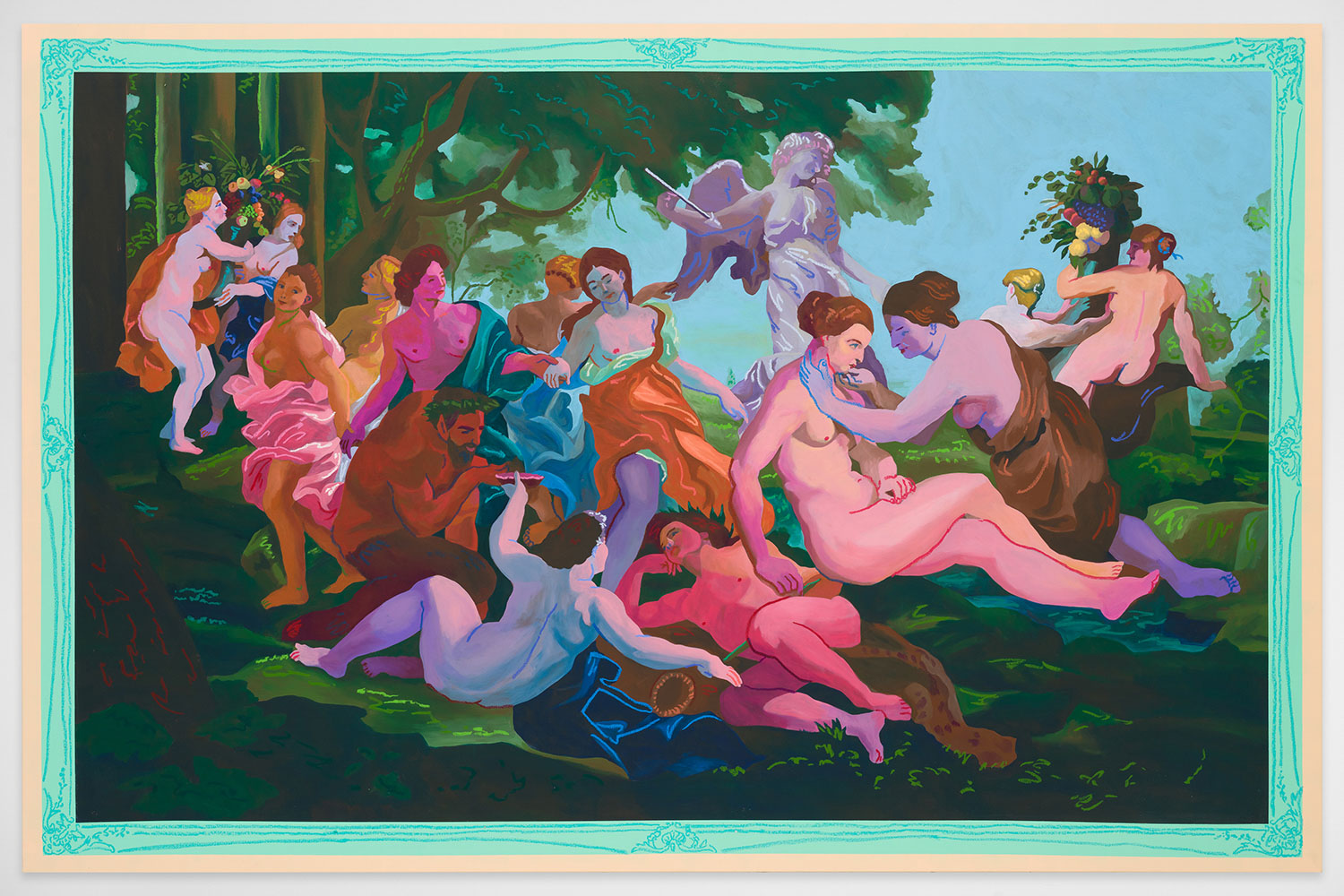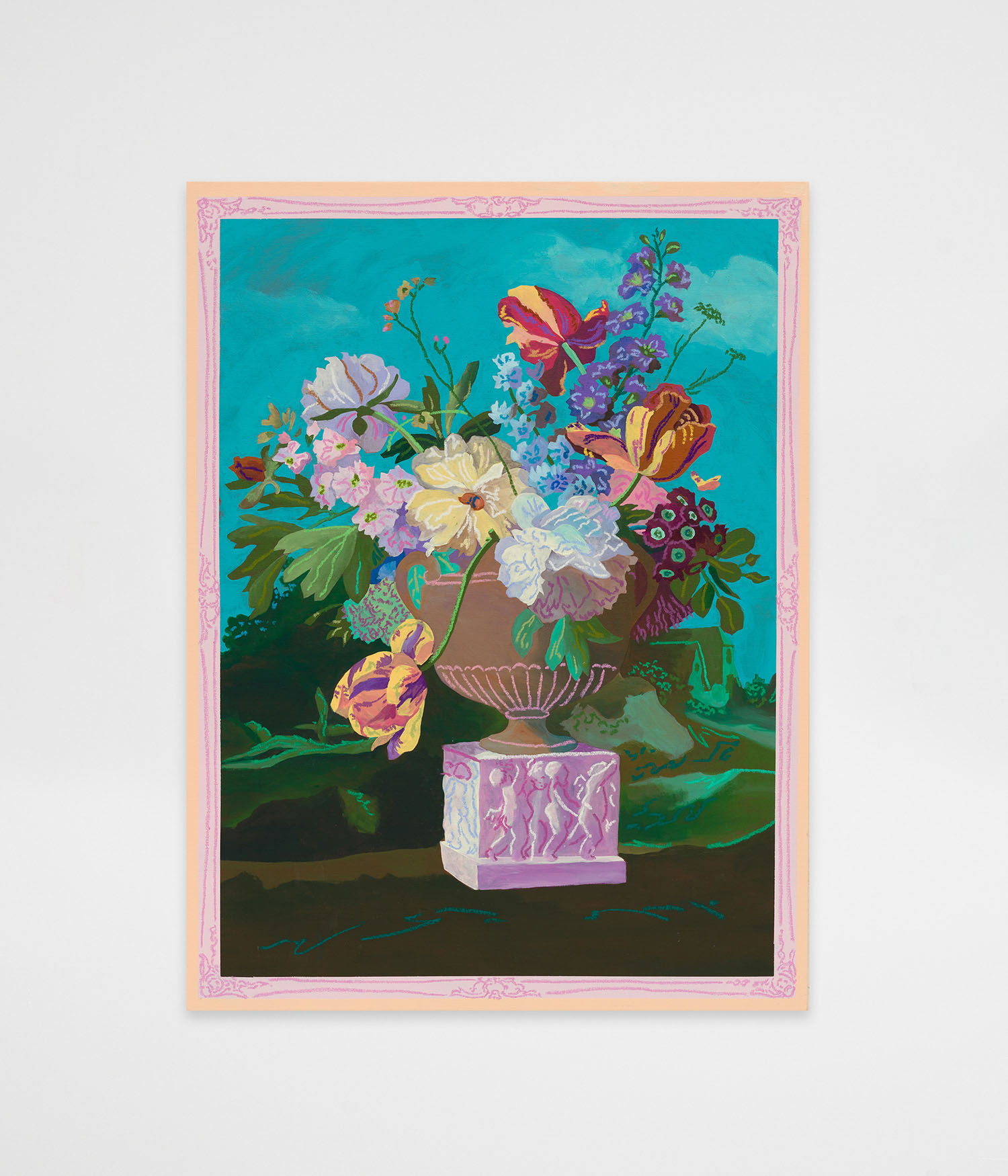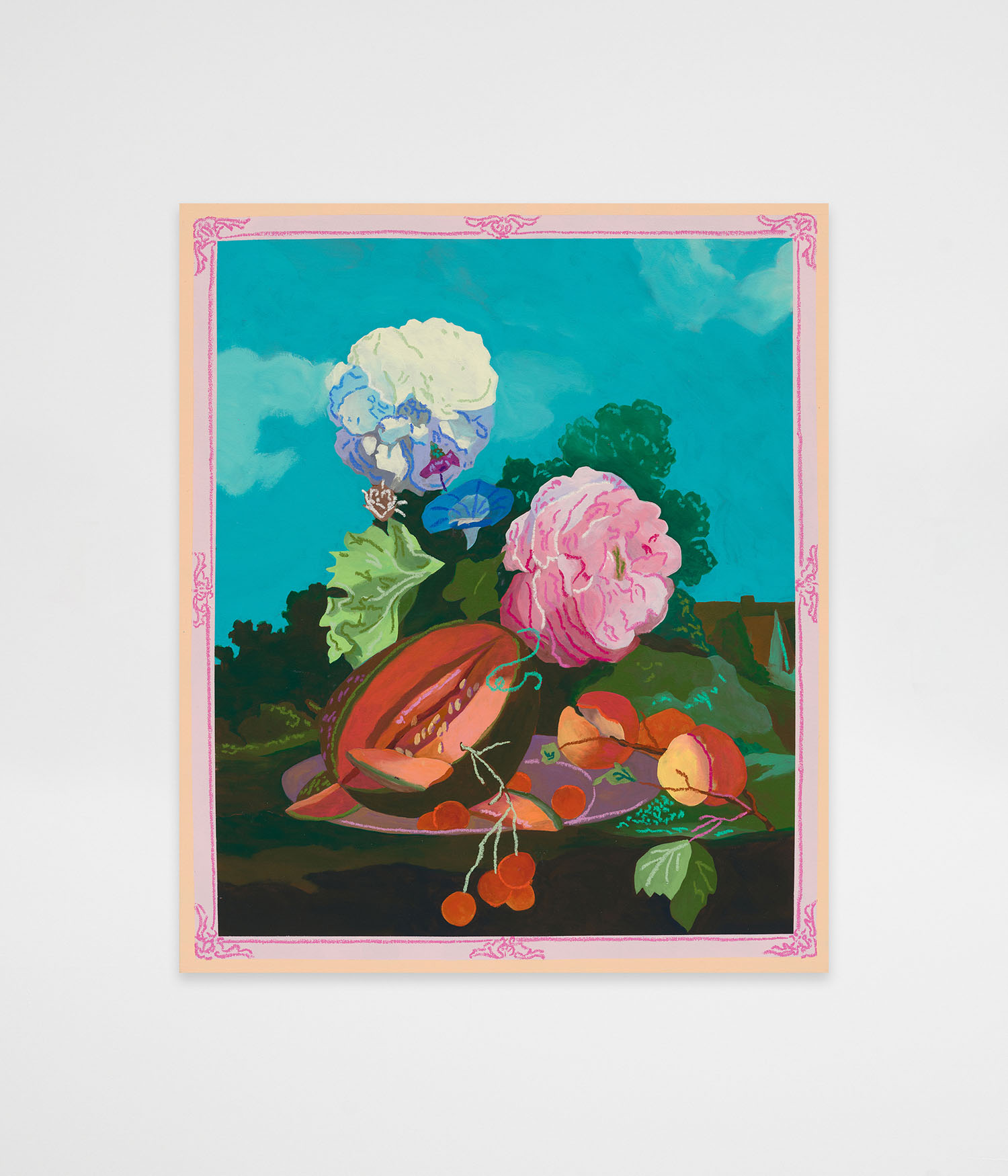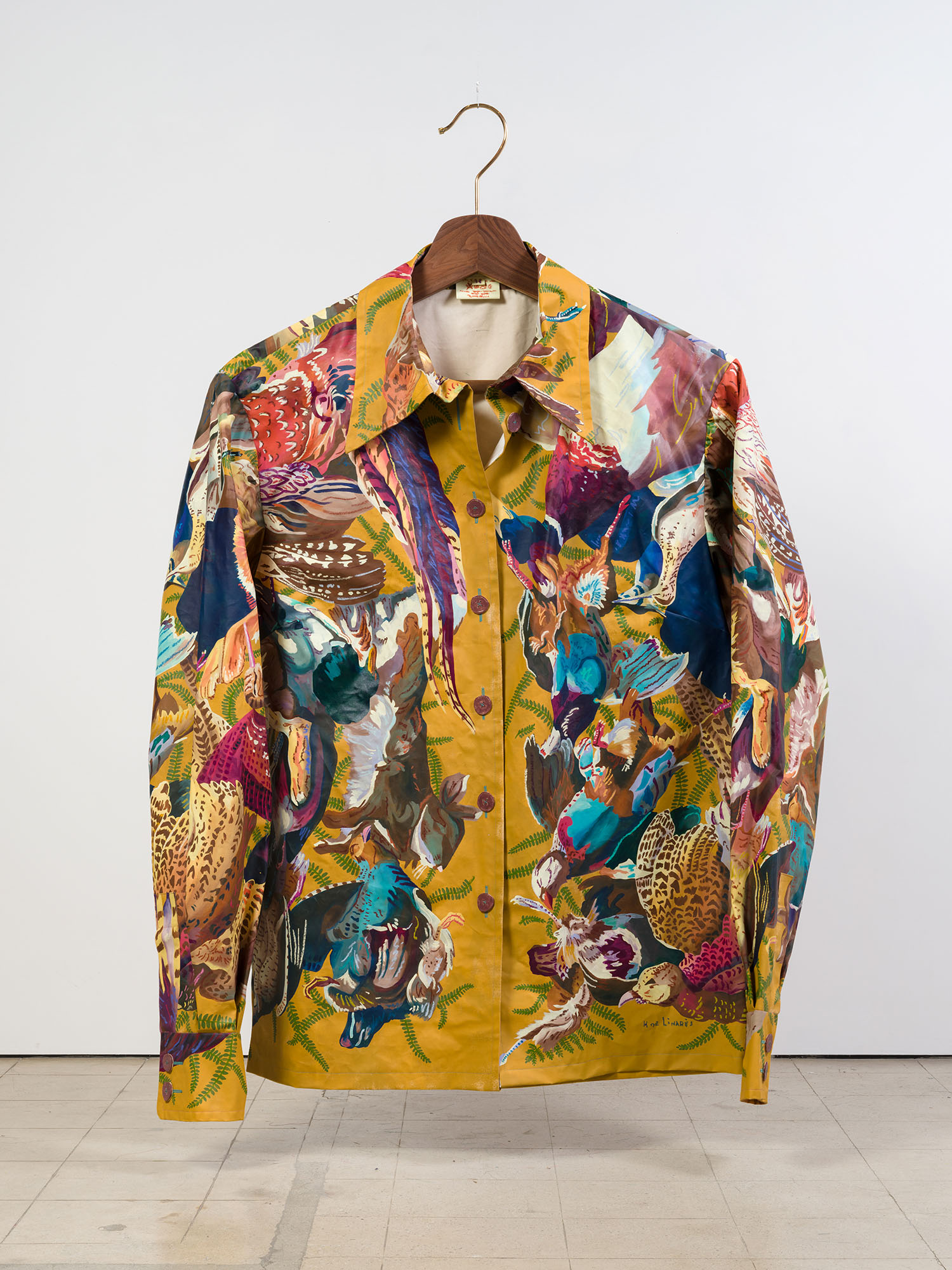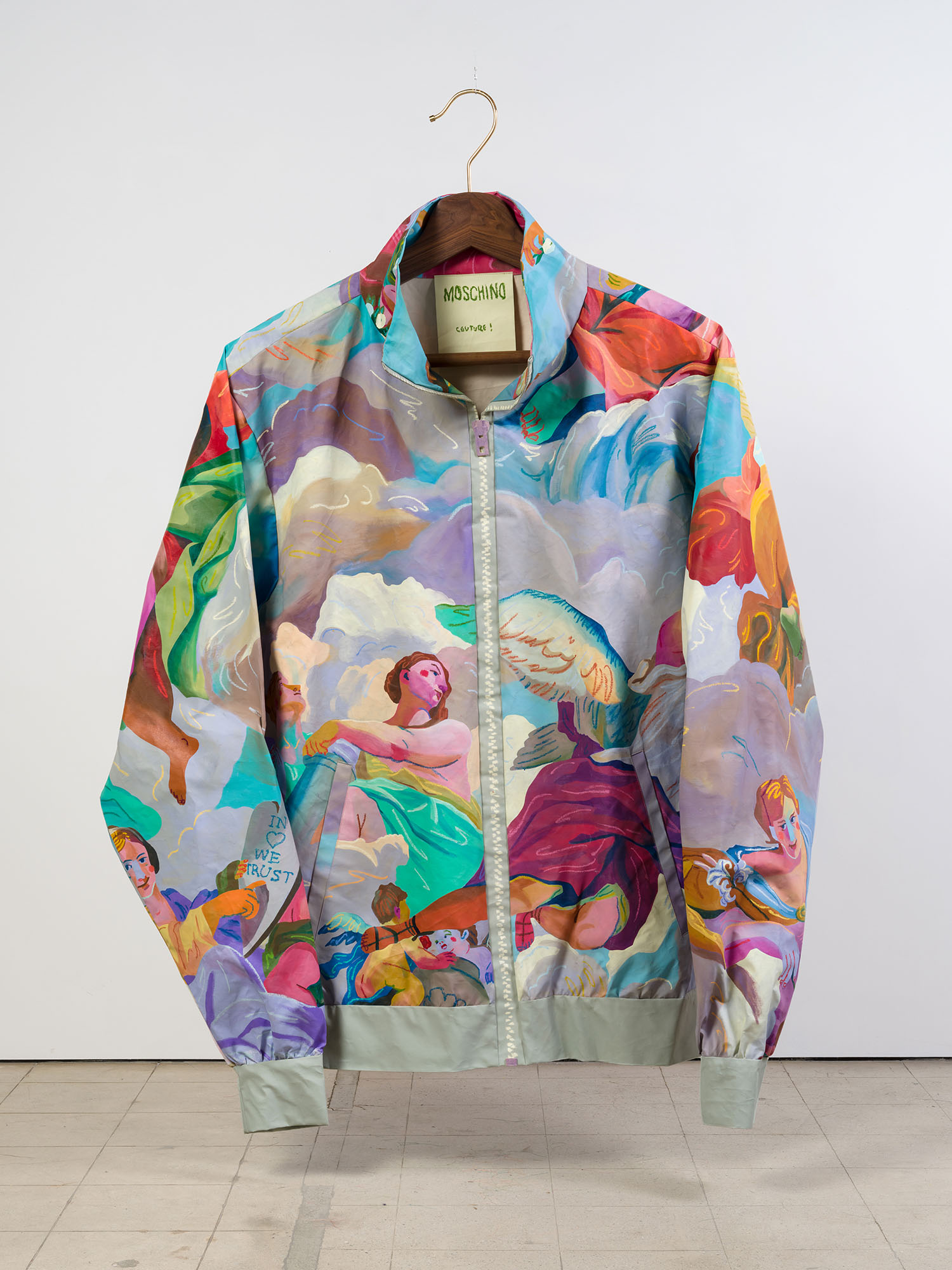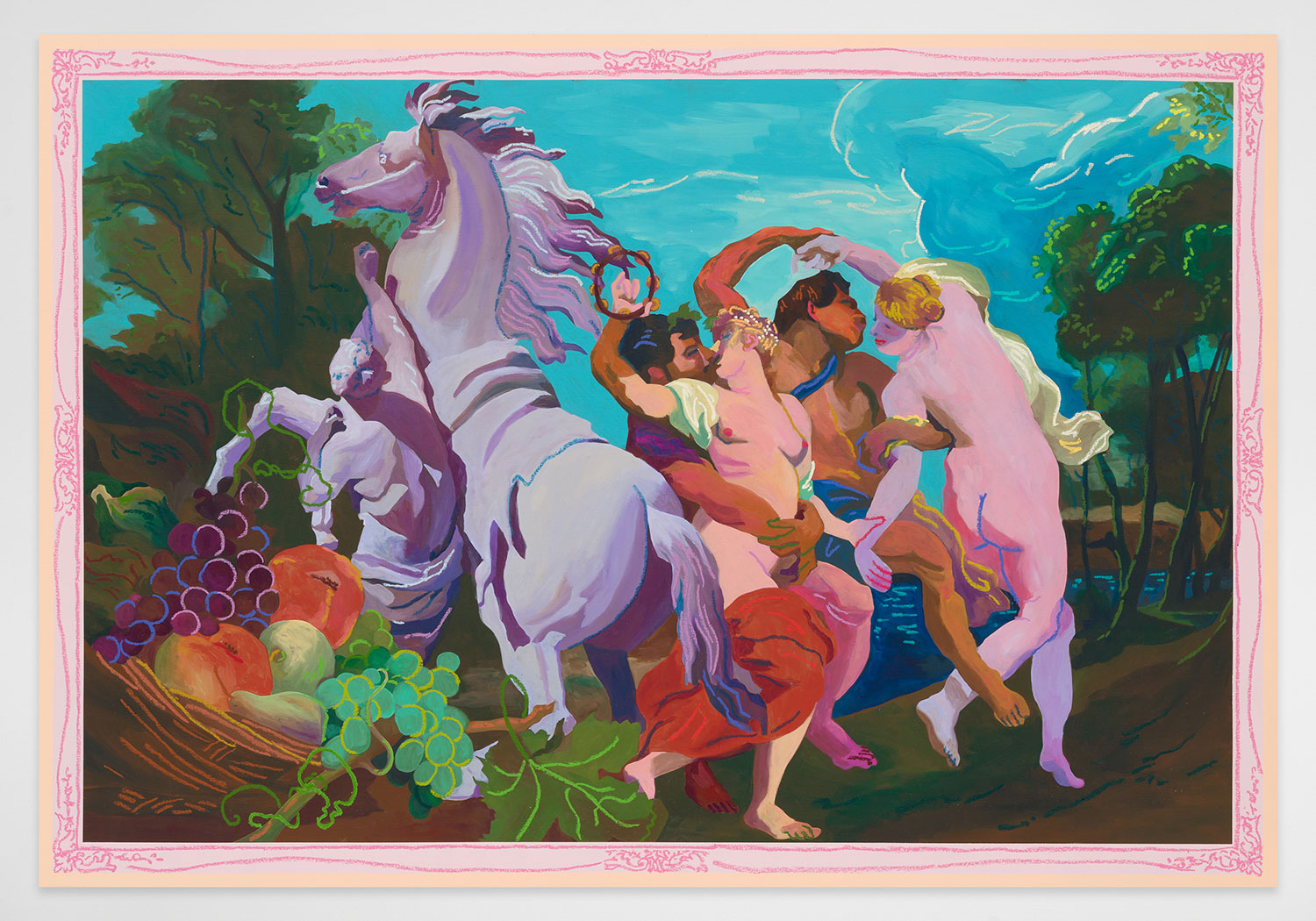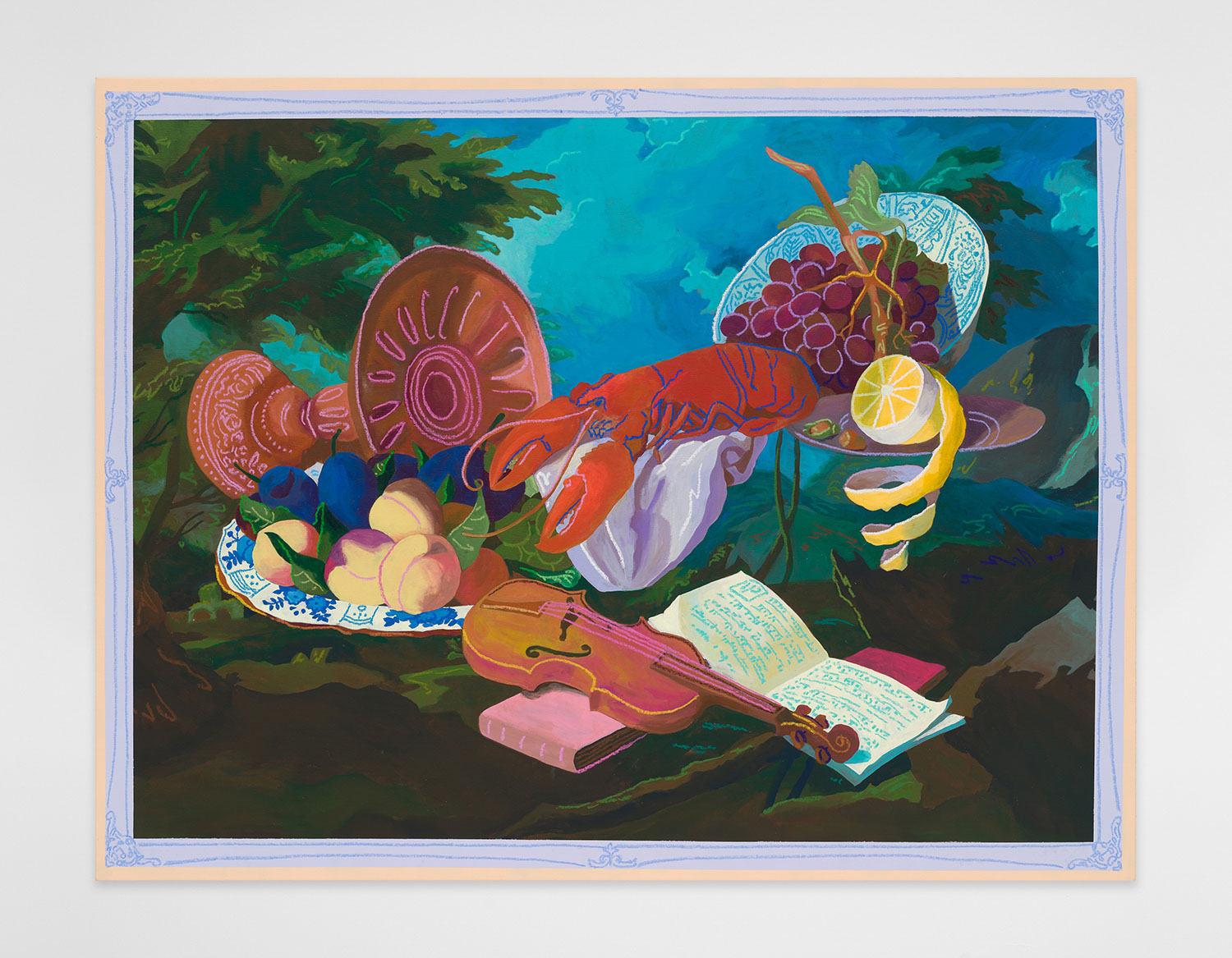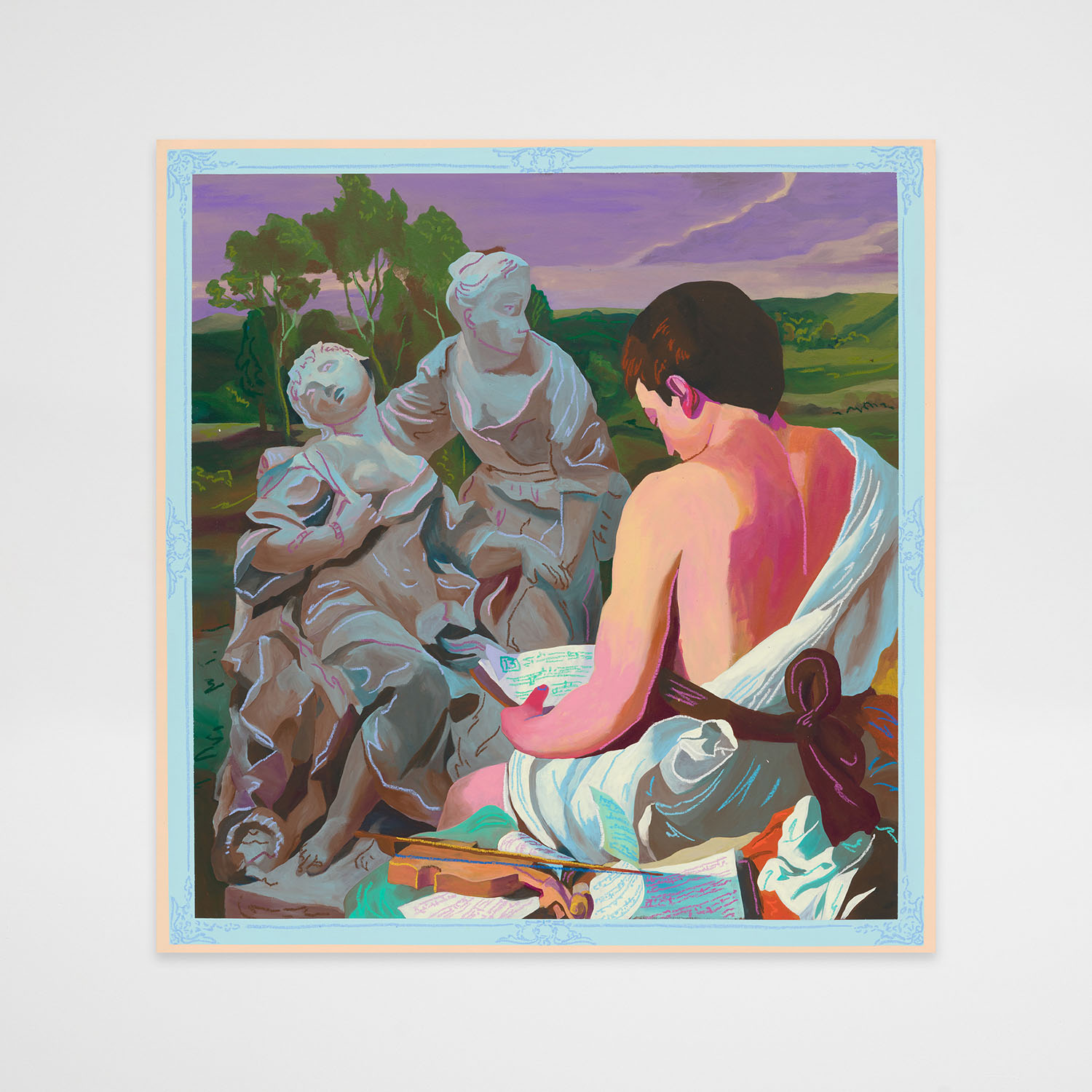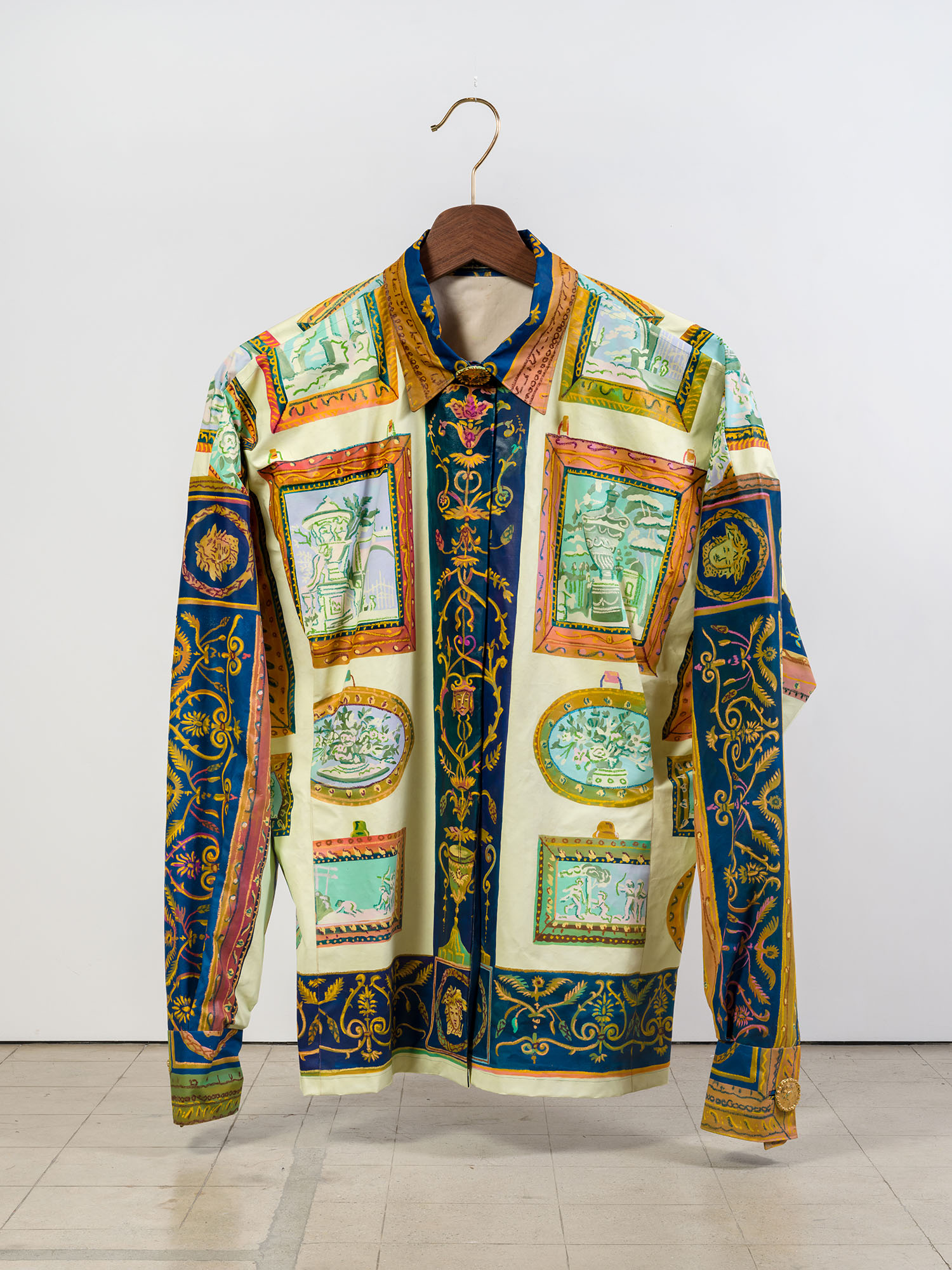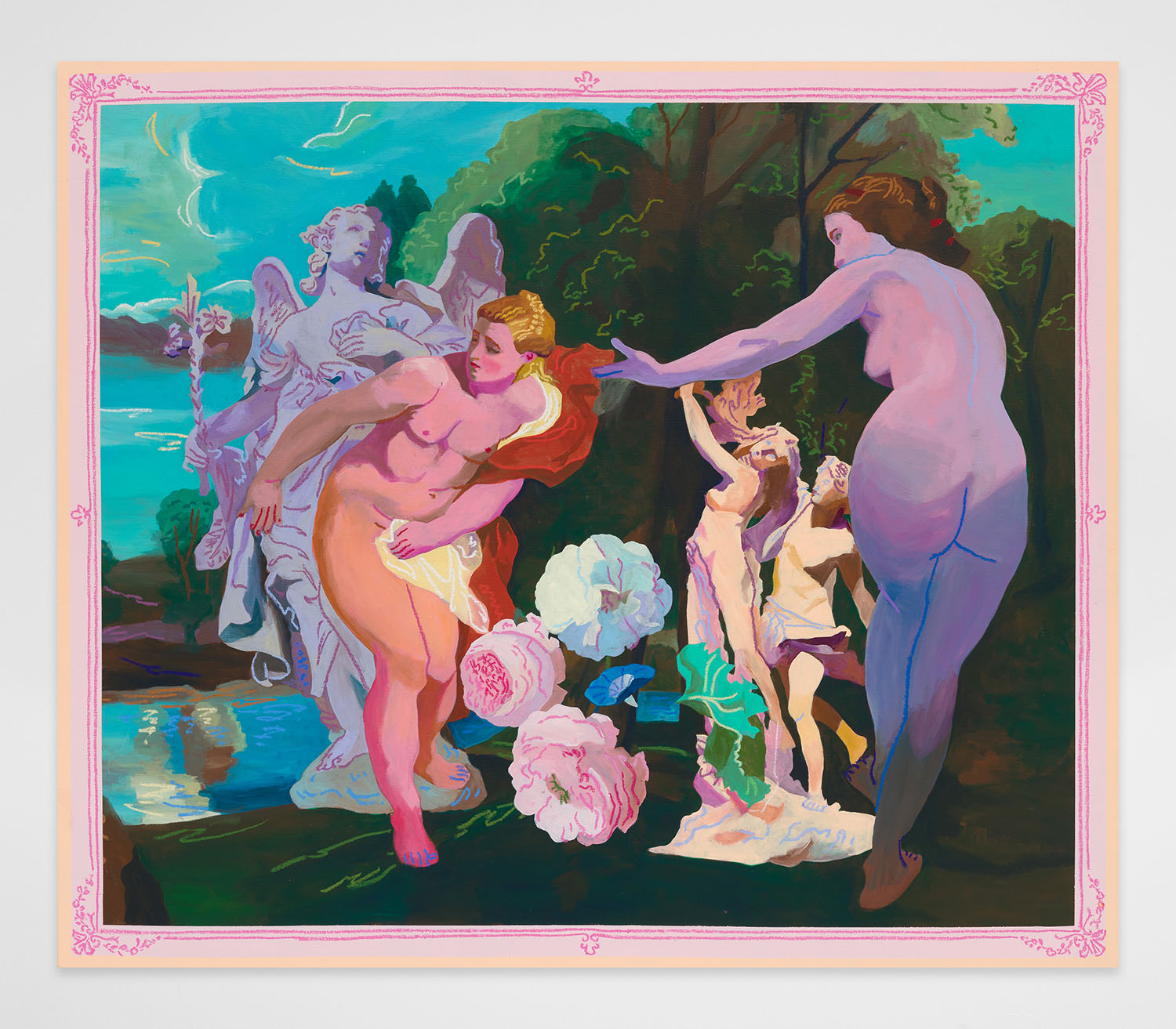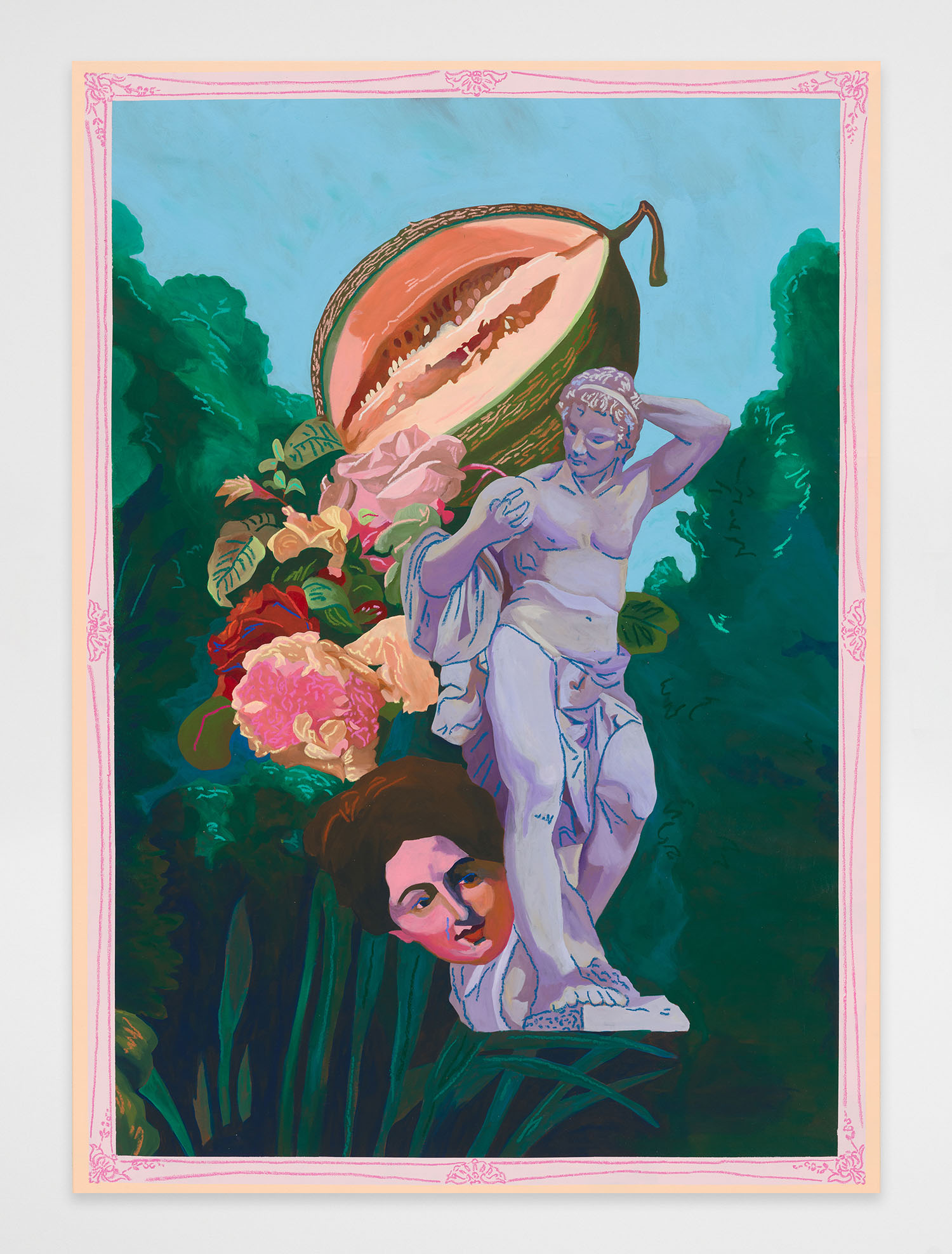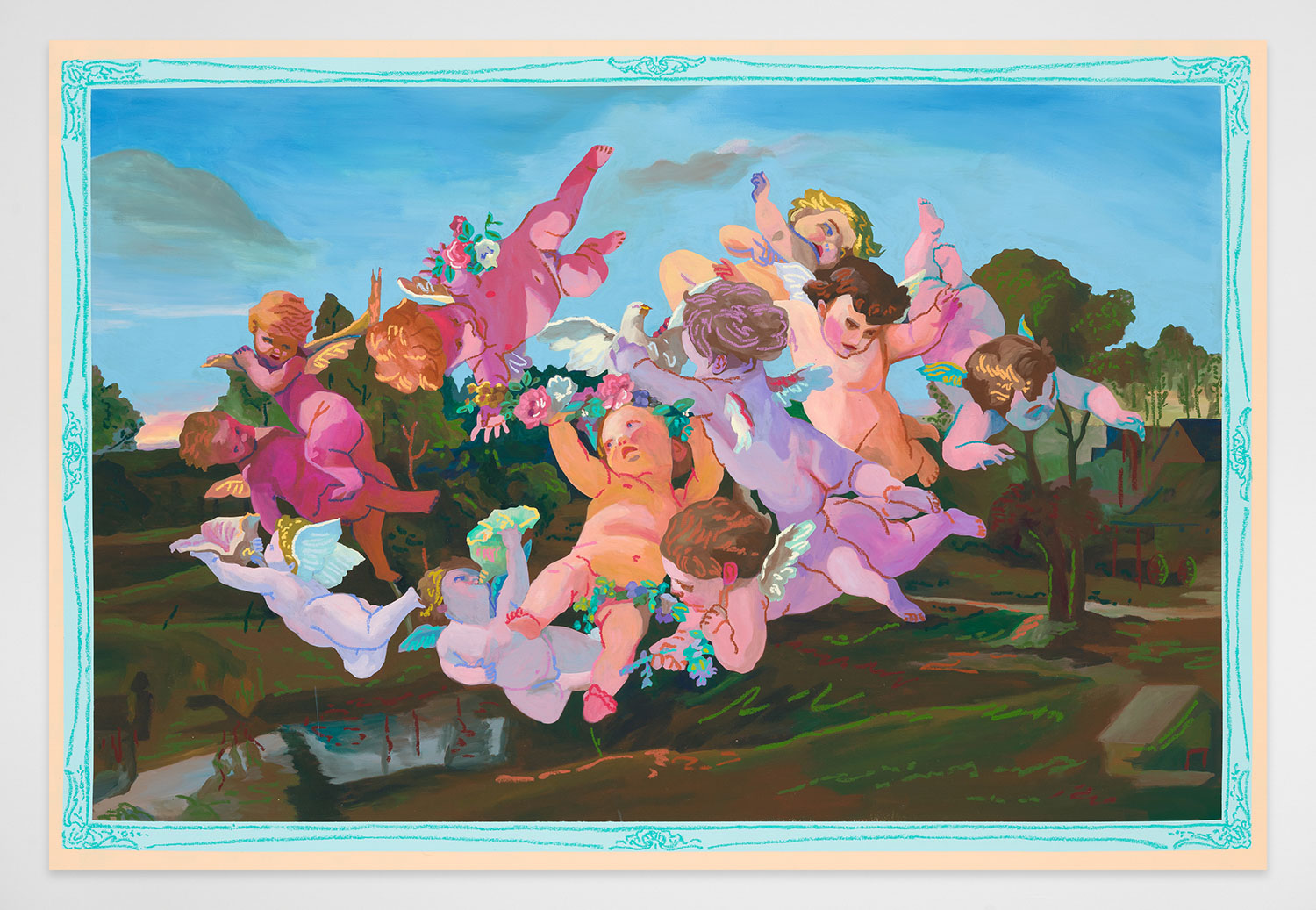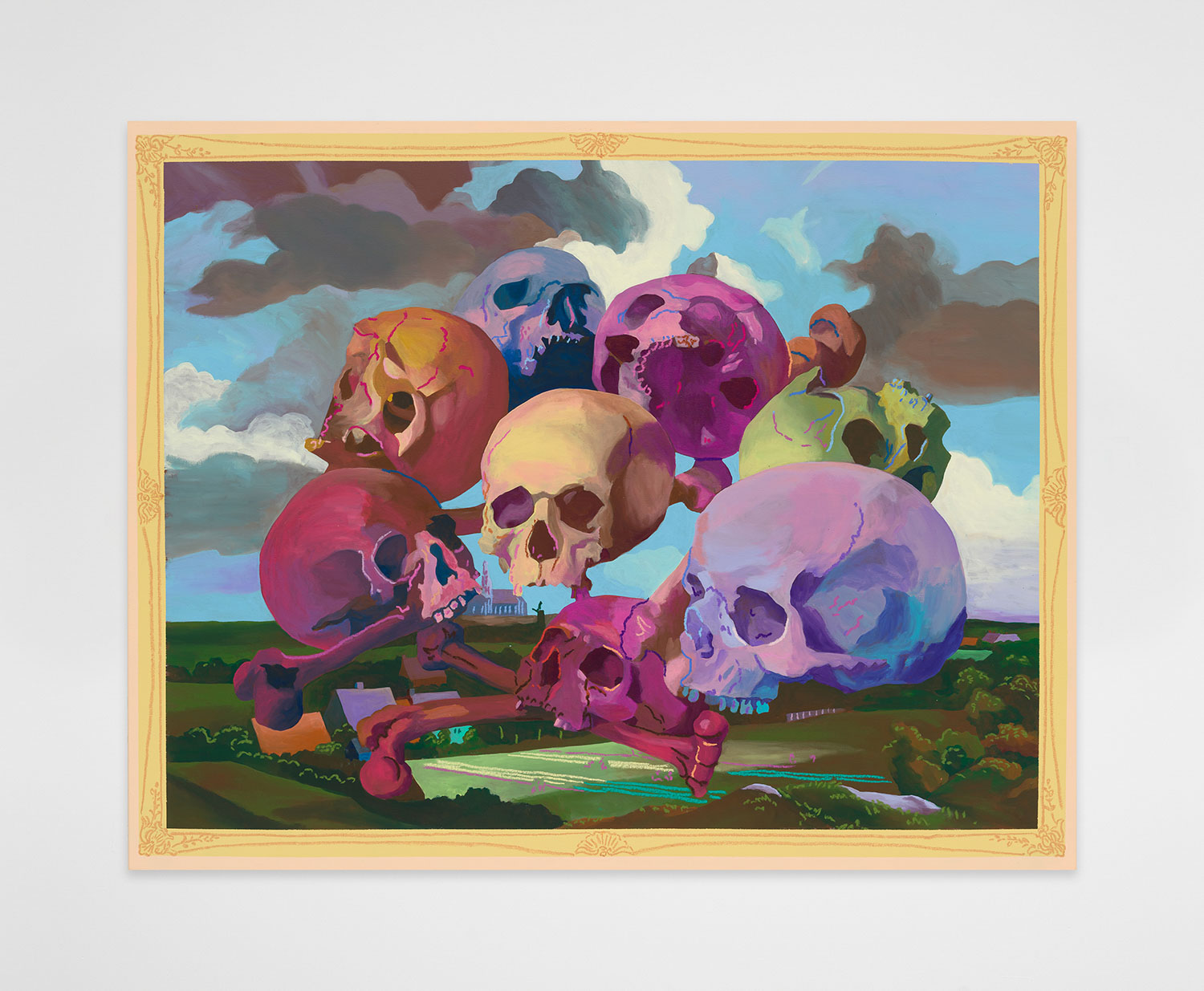Andy Dixon's New York debut, Joy, is an invitation to frolic through art history and the gallery with softly-hued acrylic and pastel. Serving fruit, flowers and wine, Dixon continues his exploration of decadent imagery and tropes from art history, working here in a baroque state of mind. Sampling bits of famous paintings and sculpture in each of his works, he composes a new tune imbued with the sense that you must have heard it before. Is that a Rubens? Perhaps a bit of Bernini….
"The world could use a bit of happiness and celebration right now," says Dixon. Up until now he says he saw himself as a kind of art world observer, like a neighbor watching a wild party in all its weirdness, shaking his fist from across the street. "Now I have entered the party." One work "Yolo :)" shows a ring of cherubs each plucked from a different painting, while "Yolo :(" does the same with memento mori skulls. You only live once, and after that it is pastiche.
Dixon has often used the analogy of music sampling to describe his work, a connection to his past life in experimental music production. While his prior works were paintings-of-paintings, where he gave an old masterwork the sort of "Andy Dixon treatment"—pastelizing the palette, simplifying the forms, drawing in pastel lines for a final pass—those were like cover songs, whereas in this show he is creating a new and more personal song entirely.
In these new works at The Hole in NYC, Dixon paints a frame, indicating that yes, this is a painting. His works are not about art history but rather about our relationship to art history, walking around museums, looking at the old masters in 2023. Playing with perception and concept, the color of the painted edges of the canvas disappears into the wall color, hovering in a surreal way to call extra attention to the act of looking.
In the rear gallery hang four of Dixon’s signature painted shirts: Hermes, Moschino and Versace looming over the viewer. Painted on canvas and then sewn into a garment, this series explores the taboo relationship between fine art and luxury, teasing the art world’s uneasy relationship to retail and highlighting the absurd truth that art is beauty and also, pragmatically, the manufacturing of luxury goods.

